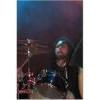G'day everyone. I'm working a space simulator project and one of the challenges I am facing is a proper starfield. I've done some research but have not come up with any conclusive answer so thought I'd post a new topic.
Some information on what I've gleaned and some options that I'm considering:
* this is my first 3d title so I am still learning how to work with the environment. I am used to 2d development.
* the game is inspired by the old xwing series. The camera will either be situated in the cockpit of a ship or be situated behind the ship as it travels.
* the camera will therefore have full rotation, yaw, and pitch functionality as the object moves through 3d space
* the starfield that it sits over must appear to move to give the illusion of movement. therefore if i pitch up, the starfield should adjust accordingly and if I pitch back down I'd expect the starfield to adjust back to where it started from.
* the starfield will have some other objects besides stars such as nebulae and clouds
Some ideas that I am considering that I'm not 100% sold on yet
* a skybox with starfield texture. - pros: easy to implement. cons: edging
* a skysphere with a starfield texture - pros: no edging issues. cons: more resources
* a particle system for stars - pros: fairly easy to create in code cons: moving it around for me, and the appearance is kind of dated but that could be just my limited shader experience
Ideas and input appreciated on the best way to implement this. I'd love something like from EVE but I am not sure how they accomplish their backdrops. They appear to me to be a skybox of super detailed textures with star particles over them.







